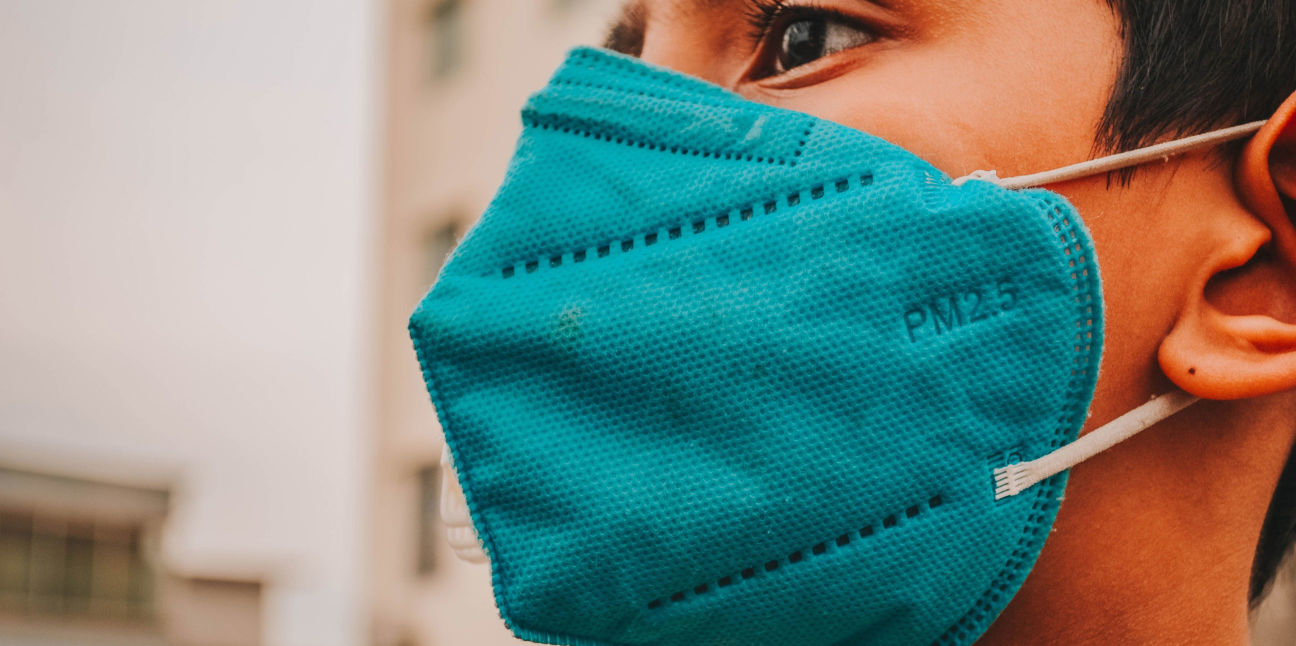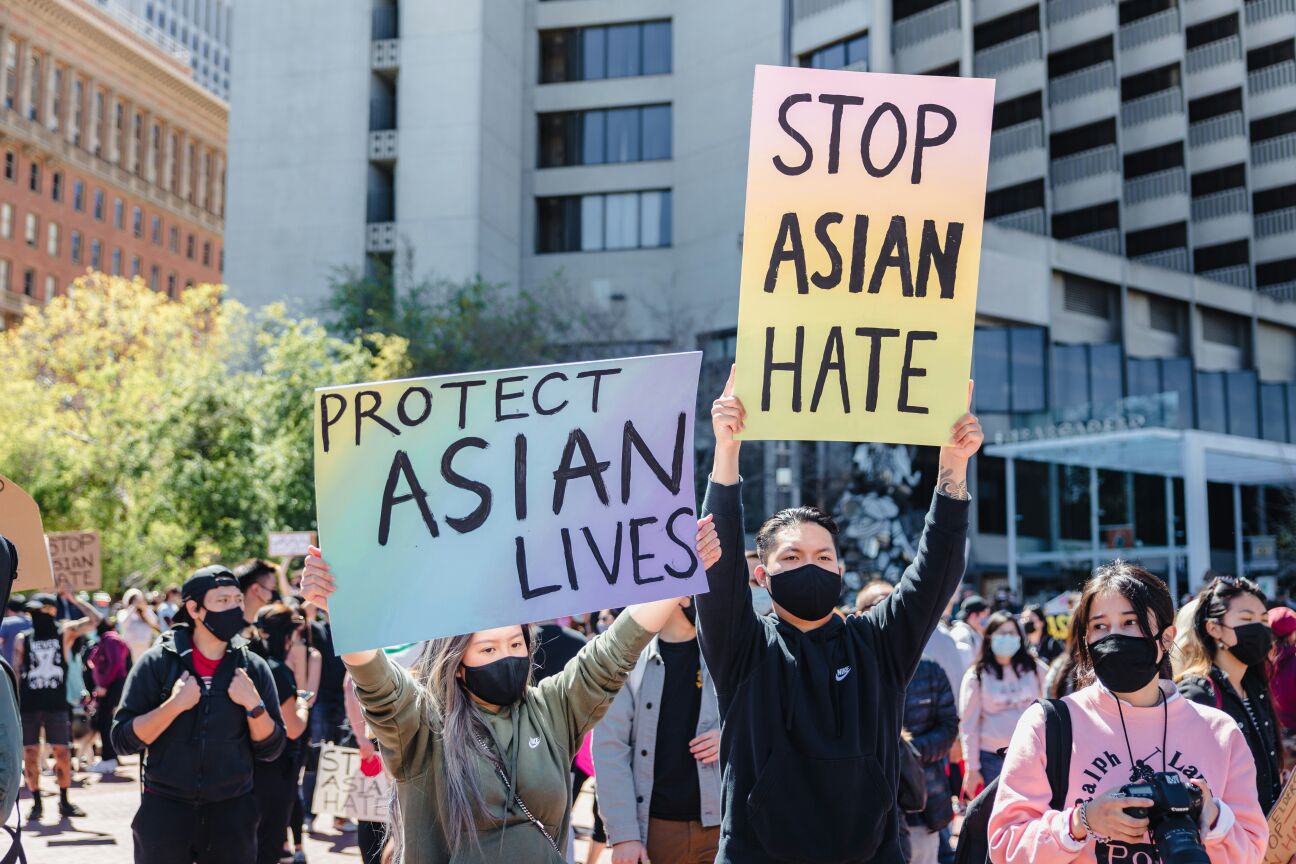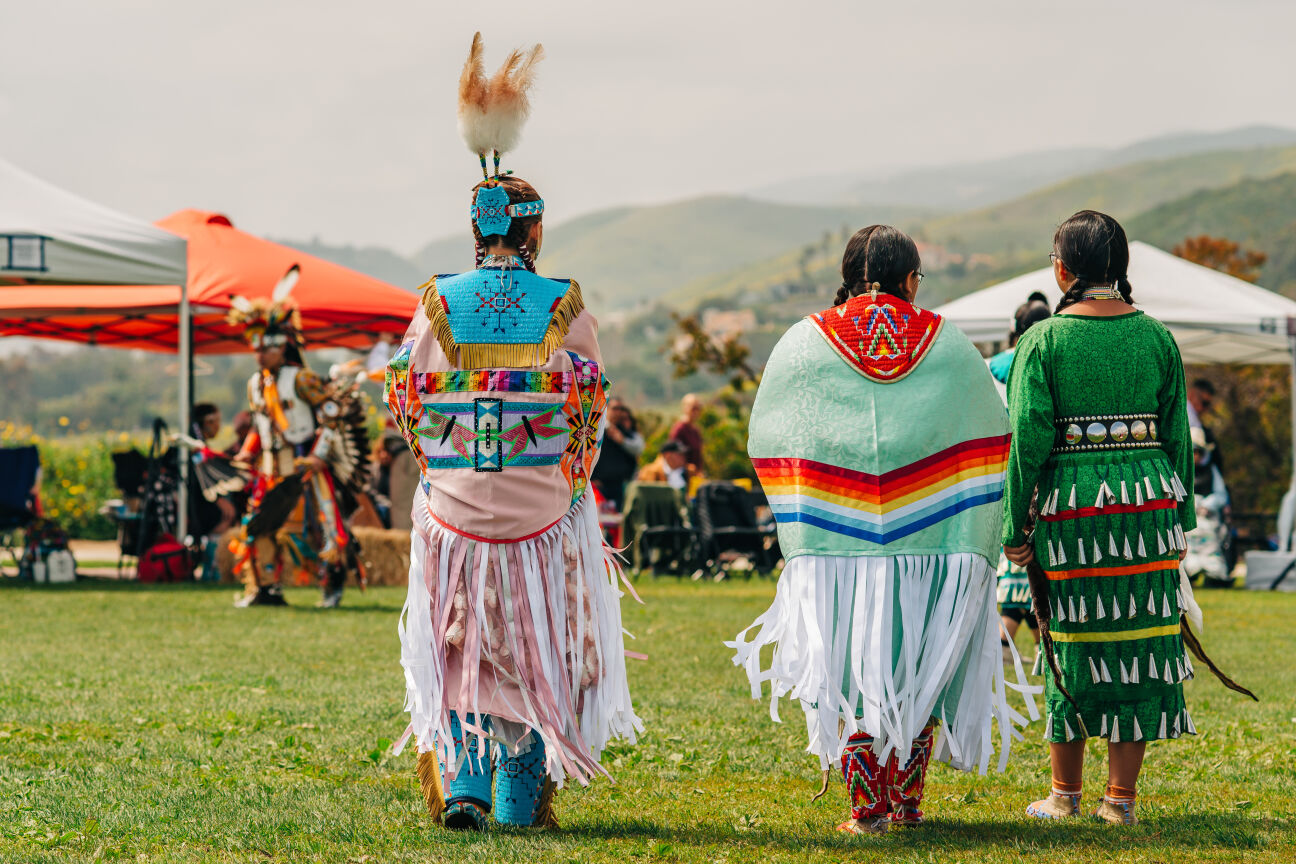JOIN THE MOVEMENT Sign-up for our mailing list!

COVID-19 brought the entire world to a screeching and unexpected halt when it appeared on the scene back in 2020. But while COVID-19 may be on everyone’s mind due to its immediate impact on many of us, it’s far from the only pandemic that’s swept the globe over the years.
In this article, we’ll take a closer look at pandemics in Canada, including their history. We’ll also take a closer look at our most recent pandemic,COVID-19, as well as its lasting impacts, and how you can help make a difference in the lives of others by donating to some of our COVID-19 relief funds.
What is a pandemic?
Wondering what the difference is between an “endemic,” “outbreak,” “epidemic,” and “pandemic”? If so, you’re not alone. Often, these words are used interchangeably. However, they’re not the same thing.
Here’s a closer look at the definitions:
• An outbreak is when a disease in a particular area rises to unanticipated levels.
• An epidemic is when that disease spreads rapidly to affect a large number of people within a certain region, population, or country.
• A pandemic is an epidemic that spans multiple countries or continents.
• An endemic is when a disease is consistently present within a particular group of people or region.
In the case of COVID-19, the health crisis was initially declared as an outbreak of respiratory illnesses in China in 2019. The World Health Organization (WHO) declared the virus a global pandemic in March of 2020—making it the first pandemic since the H1N1 influenza pandemic in 2009.
As of May 2022, there have been 522,733,391 cases of COVID-19 reported around the world and 6,269,176 deaths.
History of pandemics in Canada?
As mentioned earlier, COVID-19 is one of many infectious diseases and viruses to have swept th globe. However, it was the first pandemic in more than a decade. The last global pandemic declared by the World Health Organization (WHO) was 2009’s H1N1 influenza pandemic. Here’s a look at some other previous well-known pandemics in Canada that have impacted our society:
HIV/AIDS (Human Immunodeficiency Virus)
In the early 1980s, doctors started to notice a spike in rare cancers and other diseases affecting young gay men. As a result, this mysterious disease was named Gay-Related Immune Deficiency (GRID) in 1981. One year later GRID was renamed Acquired Immunodeficiency Syndrome (AIDS) as cases of the disease being transmitted by blood transfusions had been being reported. In 1984, the virus that leads to AIDS was identified: Human Immunodeficiency Virus (HIV). Although the name had changed, many still associated AIDS with gay men, which exacerbated homophobia and stigma. Gay men with HIV experienced harassment, workplace discrimination, and were even denied healthcare.
By 1987, thousands of people in Canada were diagnosed with HIV every year and it was seen as a death sentence. Most people would live on average for 18 months post-diagnosis.
While all of this was going on the government’s response to this medical crisis lacked urgency. This caused many HIV and LGBTQ+ advocacy groups to form and demand more research, health services, and discrimination reduction policies.
As awareness about AIDS not only affecting gay men grew, interest in the disease also increased. By the late 1990’s advancements in treatment and testing rolled out, saving the lives of many. Today, with early detection and medical treatment, people with HIV can live for decades. Though medical complications can still arise.

Despite the progress made, Canada still faces challenges pertaining to HIV. New HIV cases increased by 25.3 percent between 2014 and 2018. Making matters worse, during this timeframe, community-led HIV organizations experienced cuts to government funding, which prevents them from adequately fighting HIV and supporting those who have been diagnosed with it. Additionally, 14 percent of individuals are unaware of their status. And the virus continues to disproportionately affect gay men, Indigenous Peoples, injection drug users, and at-risk youth and women.
Although great strides have been made in the fight against HIV and AIDS, this pandemic is far from over. Stigma, discrimination, and homophobia continue to surround individuals with the virus and no cure or vaccine has yet to be discovered.
SARS (Severe Acute Respiratory Syndrome)
Like COVID-19, this viral respiratory disease began as an unknown type of coronavirus in China before spreading around the globe. It is transmitted by close person-to-person contact and first appeared in Canada in 2003. Most of the infections in Canada occurred in Toronto hospitals. Thousands of people were quarantined and 44 people died.
SARS highlighted the fact that our healthcare system was ill-prepared for pandemics in Canada and health crises. For example, Ontario’s infectious disease tracking and outbreak management software was seen as archaic and ill-equipped to monitor the spread of SARS.
During this time, SARS also fuelled Asian hate and prejudice. As reported by the Washington Post: “Subway riders refused to sit next to Asian passengers. Businesses turned away Asian customers. Asian workers found their hours scaled back. Shoppers avoided Asian-owned restaurants and small businesses or steered clear of Chinatowns altogether. Some Asian-facing organizations received a deluge of racist hate mail blaming them for SARS.”Looking back, it was a grim foreshadowing of what we’d see nearly two decades later during the COVID-19 era.
Swine Flu (H1N1)
In 2009, Canada would endure yet another pandemic—this time the influenza A (H1N1), AKA “Swine Flu.” It got its name because it was similar to a virus seen in pigs, although this was a new strain.
H1N1 began in Mexico and quickly spread through North America and into many other countries. By its end in August 2010, more than 18,000 people had died from this new type of flu, including 428 Canadians.
H1N1 differed from other flu types because it posed the greatest threat to young children, pregnant women, new mothers, and people with underlying health conditions. Older people, meanwhile, were remarkably resilient to it.
The government launched a cooperative response, led at the federal level by the Public Health Agency of Canada (PHAC). The plan focused on various public health measures including monitoring efforts, treatment, clinical care, research, and communications.
Despite government efforts, Indigenous Peoples were disproportionately affected by H1N1 in Canada, with remote and isolated communities being hit especially hard. One especially eye-opening fact? While Indigenous Peoples made up around 4 percent of Canada’s total population, they represented at least 16 percent of those hospitalized during the first wave of the pandemic and 6.1 percent during the second.
COVID-19: How this pandemic has impacted Canada
By the winter of 2020, COVID-19 was already on its way to becoming a global pandemic that would kill more than six million people (and counting) worldwide. While Canada’s first COVID case was reported in January 2020, its first death did not occur until March 8. Just three days later, the World Health Organization declared COVID-19 to be a pandemic.
By the end of March of 2020, all provinces and territories had declared a state of emergency or public health emergency; the Canadian-US border was closed to non-essential traffic; the federal Minister of Health invoked the Quarantine Act for the first time in legislative history. Words like “social distancing” and “quarantining” were added to our collective vocabulary. And
Widespread restrictions like lockdowns, social distancing, mask requirements, and vaccine mandates initially led to a drop in cases. However, the subsequent easing of those restrictions led to subsequent waves. At the end of 2021, new daily cases reached an all-time high in Canada. As of the writing of this article in mid-May of 2022, Canada had more than 3.8 million confirmed COVID-19 cases and nearly 40,300 deaths.
And while Canada made headlines for its anti-vaccine mandate protests, the reality is that the country fared much better than the US in terms of its COVID death rate. Health officials attribute this disparity to Canada’s higher rate of full immunization and its universal and publicly funded healthcare system.
Even still, COVID-19 had many far-reaching impacts. Here’s a look at a few of the most noteworthy:

Increase in remote work
With lockdowns in effect and social distancing measures in place, many businesses were forced to implement remote work solutions. Suddenly, millions of people found themselves unexpectedly working from home.
It was a new turn of events at the beginning. After all, who doesn’t love working in their pyjamas? And it’s true that remote work can have many benefits, including more freedom and flexibility, increased productivity, less commuting time and expenses, and more comfortable work environments. However, these benefits don’t apply in all cases or to everyone.
Many people were furloughed or laid off during COVID-19, while others were deemed “essential.” This meant they were required to continue going to work every day—despite the threat to their health associated with doing so. This included jobs like grocery store clerks, health care workers, and transit operators.
Over time, meanwhile, the downsides of remote work also became clearer. These included isolation, distractions, and loss of work-life balance. Remote work also exposed inequities, such as lack of internet availability to the fact that women were bearing the brunt of child and elder care during this time.
A toll on mental health
The stress, anxiety, and isolation of COVID-19 took a serious toll on mental health in Canada. A 2021 Canadian Mental Health Association (CMHA) report on the effect of COVID on mental health revealed the following troubling data:
• 38 percent of people said their mental health declined during COVID-19
• 46 percent of people reported feeling anxious or worried
• 14 percent of people said they were having trouble coping
• 6 percent of people reported having suicidal thoughts
• 2 percent of people tried to harm themselves in response to COVID-19
While some people found healthy ways to cope, such as connecting virtually with family and friends and maintaining healthy lifestyle habits, others reported the opposite. Nineteen percent of people reported turning to alcohol more during the pandemic.
Even more alarming? While mental health issues can and do impact people from all walks of life, certain groups were affected more than others during COVID-19. Among the general population during Canada’s first COVID-19 wave, 6 percent of people reported having suicidal thoughts.
However, public health research shows that this number was significantly higher for other groups, including:
• 18 percent of people who were already struggling with their mental health
• 16 percent of Indigenous people
• 15 percent of people with disabilities
• 14 percent of people with low incomes
Impact on Indigenous communities
The pandemic further highlighted the many inequalities Indigenous communities face in Canada due to the country’s legacy of colonization and government-led assimilation practices.
Indigenous Peoples were disproportionately impacted by the virus itself in comparison to non-Indigenous Peoples. In Manitoba, for example, while Indigenous Peoples comprise just 10 percent of the total population, they accounted for nearly 70 percent of its COVID-19 cases.
Indigenous Peoples were also more likely to experience job loss or reduced work hours and be unable to meet their essential needs or financial obligations. Between July 2020 to June 2021, 28 percent of Indigenous Peoples lived with economic insecurity in comparison to 16 percent of white people. Reports also showed that Indigenous Peoples were facing slower economic recovery than the rest of the country. When the Canadian economy added 246,000 jobs, unemployment rate for non-Indigenous Peoples became 11.7 percent. It was 16.8 percent for Indigenous Peoples.
Additionally, the Canadian Mental Health Association indicates that during the first wave of COVID-19, Indigenous Peoples were more likely to:
• Have trouble coping
• Feel depressed
• Feel lonely and isolated
• Have increased alcohol use
• Have tried to harm themselves
• Have suicidal thoughts
Indigenous women, in particular, reported worsening impacts on their mental health. Based on data from StatCan, 48 percent of Indigenous women reported symptoms of moderate or severe generalized anxiety disorder in comparison to 29 percent of non-Indigenous women.
All of which begs the question: Why? CBC Canada explains, “History has shown that, in every time and place, social and environmental factors like nutrition, housing, and sanitation are the most important determinants of how a population fares during a disease outbreak.”
In the case of the Indigenous population in Canada, the ongoing effects of colonization, including food scarcity, overcrowded housing, water advisories, and substandard health care are a perfect storm for vulnerability to COVID-19 and other epidemics.
According to a letter published in the leading science journal Science, meanwhile, the situation is especially ironic because Indigenous principles and knowledge may actually hold the key to global recovery.
“As we mobilize knowledge for recovery and reimagine the ways in which we live and consume in the wake of COVID-19—and amid the ongoing climate and biodiversity emergencies—partnering with holders of traditional knowledge can help drive systemic change by transforming our relationships with the Earth and with each other,” states the letter’s co-authors, Jared Gonet, Anne Mease, and Katarzyna Nowak.

COVID-19 Relief Funds
COVID-19 has forever changed the world and how we live in it. However, many people are working—in many different ways—to support the recovery and make Canada (and the world) a better place. While some people are on the frontlines battling COVID-19 as healthcare professionals, others are working behind-the-scenes, offering resources and services to strengthen communities impacted by the virus.
While we finally have reason to be optimistic about the light at the end of the tunnel, the recovery is going to take time. Many people will need support to get back on their feet. You can help them by making a donation to one of the following vital COVID-19 relief funds:
COVID-19 Healthcare and Hospital Fund: Support those on the frontlines. Ensure healthcare workers and hospitals have the equipment, tools, and resources to fight COVID-19 and care for their patients.
COVID-19 Community Care Fund: Even as restrictions loosen, many communities still continue to be impacted by COVID-19. Donate today, and support vital programs that cater to vulnerable communities like, children, those with mental illness, and households experiencing food insecurity.
International COVID-19 Relief Fund: COVID-19 has heightened global health inequalities, and in order to stop the spread of the virus, access to treatment, medical resources, and public health education has to increase across the globe. Help increase access to vaccines, deliver PPE, offer public education resources, and much more.
The COVID-19 Charity Adaptation and Innovation Fund: Charities have been hit hard by COVID-19 and many are struggling to stay open. They are the backbone of our communities and now more than ever they need your support. Donate today, and help ensure vital, much-needed programs stay open.
The COVID-19 Seniors Care Fund: Canada’s senior population was hit hard by the virus. Support critical programs that cater to the unique needs of our elderly. This includes high-quality long-term care, meal-delivery services, physical and mental health services, advocacy, and more.
We can’t change the past or undo the devastating effects of COVID-19. However, we can create a brighter future for all. Do your part by making a donation. Fight COVID-19 and help rebuild our society.
More From The Blog

Social Justice, Human Rights, Racism
Asian Heritage Month and Canada’s History of Anti-Asian Racism
May 14

Human Rights, Women’s Rights
The Fight for Gender Equality Continues this International Women’s Day
March 8

Human Rights, International, Indigenous Peoples
Indigenous Solidarity: A Q & A with Charities Supporting Indigenous Communities
September 25





